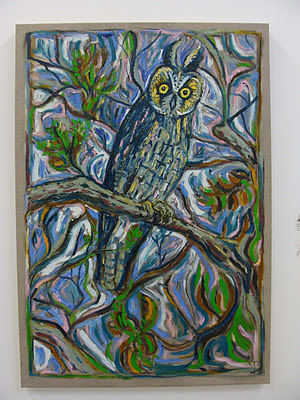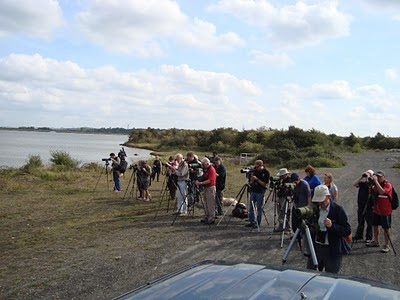Year list (British): 164*
'Total' year list (inc abroad): 179
Lifers: 55
Number of times Woodpigeon mistaken for something else: 18
A brief glimpse of a Water Rail today, darting between reed beds, was a welcome late year tick on an otherwise overcast and dreary day at Rainham. It's been a frustratingly slow trawl through winter, but otherwise I've had an absolutely brilliant year watching birds.
So what is this 'year list' thing? Well, simply, it's a record of each species I saw this year. Not everyone keeps lists but like those that do, I had certain rules; I had to see the bird, not just hear it, they had to be wild too and on the official 'British list'. So, for example, the Black Swan that I spotted with a Mute flock on the marshes can't be counted. 164 in my first year of actually keeping a record seems like a good achievement. It helped that I travelled a bit; made short trips to far flung corners of the British Isles, including Wales, Ireland and Scotland. It also helped that since July I have found myself living on a stunning nature reserve in Kent. What a privilege it's been...it's unreal sometimes. It's not about ticks really, it's about birds and there have been some great moments.
Ok, so there were some misses too. You'd think that I should have been able to rustle up a Bittern somewhere, given their widely reported and welcome return from near-extinction in the UK. I missed a sitter on Egyptian Goose and Wood Warbler proved elusive during a camping trip to Wales in June. I felt sure that Brambling and Woodcock would be sure bets this winter, but not near me apparently. The latter, I'm 99% sure I had one day - my only glimpse a small, dark, brown shape flushed from undergrowth in a thumping whirr of wingbeats. So a classic Woodcock encounter but an element of doubt and it don't cut the cheese - them's the rules. And then of course there is THAT bird. The one that got away. We don't talk about it here, we'll just refer to it as that punk-haired visitor from Scandinavia and beyond. I think I'm the only person in the UK who didn't see one last winter.
My 2011 list apparently started with a Jay seen from my bedroom window in Lewisham on Jan 1st. To the untrained eye, south east London probably looks like a never-ending parade of fried chicken places and Tesco metros' (and that's a fair assessment). But in amongst it there is green gold and my favourite spots (stand up Sydenham Hill Wood, Hilly Fields, Nunhead Cemetary, Brookmill Park) were good for nearly 60 species between January and April. College field trips were great for birding (less so for actually working) and nabbed me a fine male Smew at Amwell Lakes in Herts and a pair of Whoopers over Enfield. Spring was spring and I went everywhere, whenever I could. My first Blackcap arrived in Lewisham on March 29th, closely followed by Willow Warbler in Crystal Palace on April 5th. Swallows weren't far behind, arriving on my patch by the end of the month, shortly before the first Swift of the year on May 3rd.
 |
| Great Crested Grebe, Hatfield Forest |
 |
| A stunning female Red-flanked Bluetail |
But if I had to choose one bird that summed up this year for me, it would be this one (sorry crap pic):
 |
| Turtle Dove (Streptopelia turtur) from my bedroom window, RSPB Northward Hill, 9.7.11 |
So what was your highlight of 2011? What did you see and what did you miss? Got a birding story? Get in touch...














































